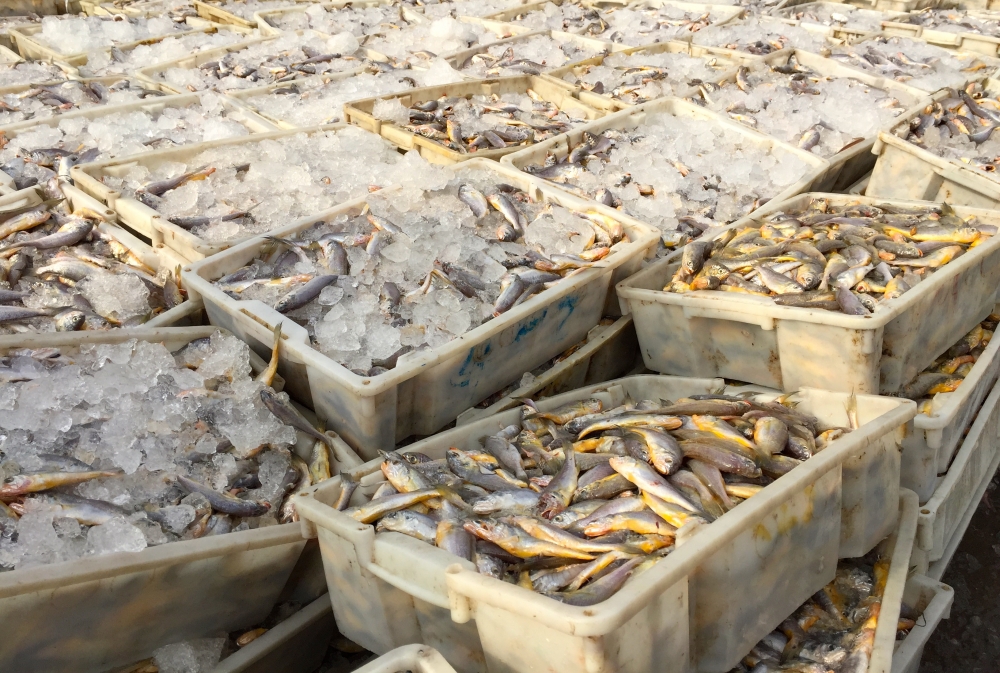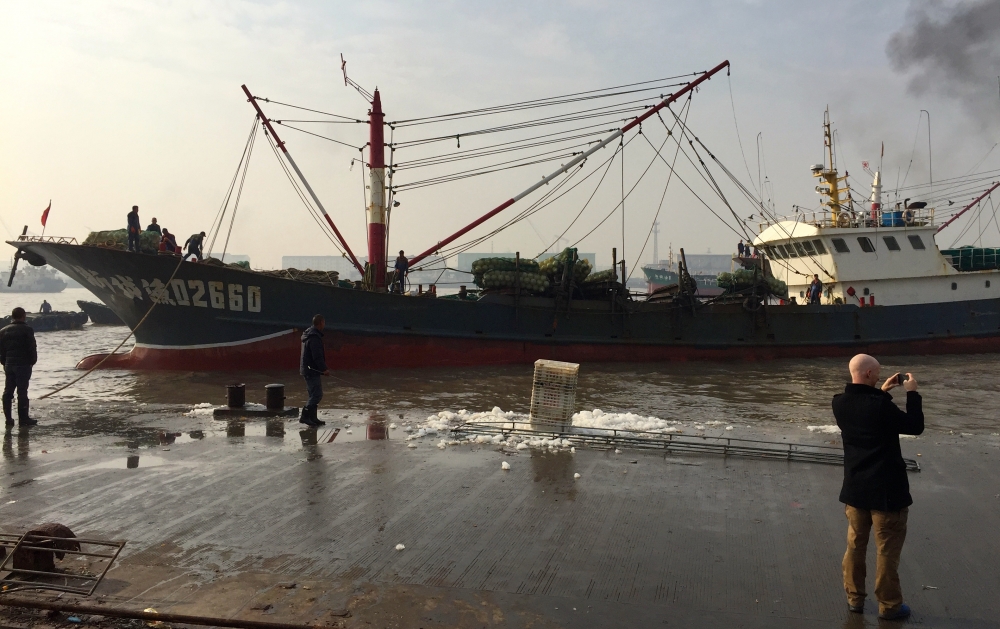Intense Industrial Fishing

China, the world’s largest seafood producer, has done something extraordinary. For the past 20 years, despite minimal management and some of the most intense industrial fishing in the world, it has maintained large catches of key species in its most productive waters.
That same kind of intense, lightly managed industrial fishing has collapsed other fisheries, such as Newfoundland’s cod fishery in the 1990s. China’s ability to sustain its catches has puzzled scientists, some of whom have even questioned the accuracy of the country’s catch reports.
A new study from UC Santa Barbara, published in the Proceedings of the National Academy of Sciences, suggests another explanation: By reducing the population of predatory fish, China has increased populations of preyed-upon species.
“If you fish down the large predatory fish, then you can catch more small prey fish, because they are no longer being eaten before you get to them,” explained lead author Cody Szuwalski, a fisheries scientist in UCSB’s Sustainable Fisheries Group. The group is a collaboration of the campus’s Marine Science Institute and Bren School of Environmental Science & Management.
Key to the success of this approach is that predators typically need to eat 10 pounds of prey to add one pound to their own weight, so fishing out predators tends to increase prey catches by much more than it reduces predator catches.
This shortening of the food chain by removing predators to increase harvests is common on land. In fact, it’s a key feature of modern farming. “If farmers could earn as much from raising venison on a field as they can from growing corn on it, they probably wouldn’t try to keep deer out of their fields,” said co-author Matt Burgess, a postdoctoral researcher in the Sustainable Fisheries Group.
But in the oceans, shortening the food chain looks different, because who eats whom in the fish world is generally based on body size rather than species. Bigger fish eat smaller fish, even when the two are from the same species (cannibalism) or the smaller fish are the juveniles of predator species and the bigger fish are adults of prey species. So while it’s unlikely that an adult gazelle would eat a baby lion, an adult sardine certainly would eat a young largehead hairtail, a predatory species that is one of China’s most common catches.
The study was based on a model of the East China Sea ecosystem built to account for this size-based feeding as well as the history of intense trawl fishing in the region. The model was able to roughly re-create reported catches of all major species.
The research also correctly predicted that under China’s current approach, even catches of such predator species as the largehead hairtail would remain high, although they would consist mainly of 1-year-old fish. “This is exactly what you see when you visit Chinese fish markets,” Szuwalski said.
Beyond providing an answer to an important fisheries puzzle, the study also offers important lessons for fishery management in Asia. When used to simulate various possible management strategies in the East China Sea, the model predicted that Western-style, single-species management would decrease catches by reversing changes to the food chain that have so far allowed catches to remain high. The same could be true in many other major fishing countries, particularly in East Asia, where fishing histories are similar to those in China.
“The standard refrain is that most countries can catch more by managing their fisheries like we do,” said co-author Christopher Costello, co-principal investigator of the Sustainable Fisheries Group. “What if we’re giving them the wrong advice?”
Given the negative impacts on biodiversity and potentially reduced ecosystem resilience in the face of climate change, “engineering” ecosystems by removing predators to enable large harvests is not necessarily an advisable long-term fishery management strategy. Still, the study suggests, in places where predator removal has already occurred, managers need to take the food chain into account to avoid unexpected consequences. Indeed, the model predicts that it is possible — at least in China — for such ecosystem-level management to increase catches, revenue and biomass.





